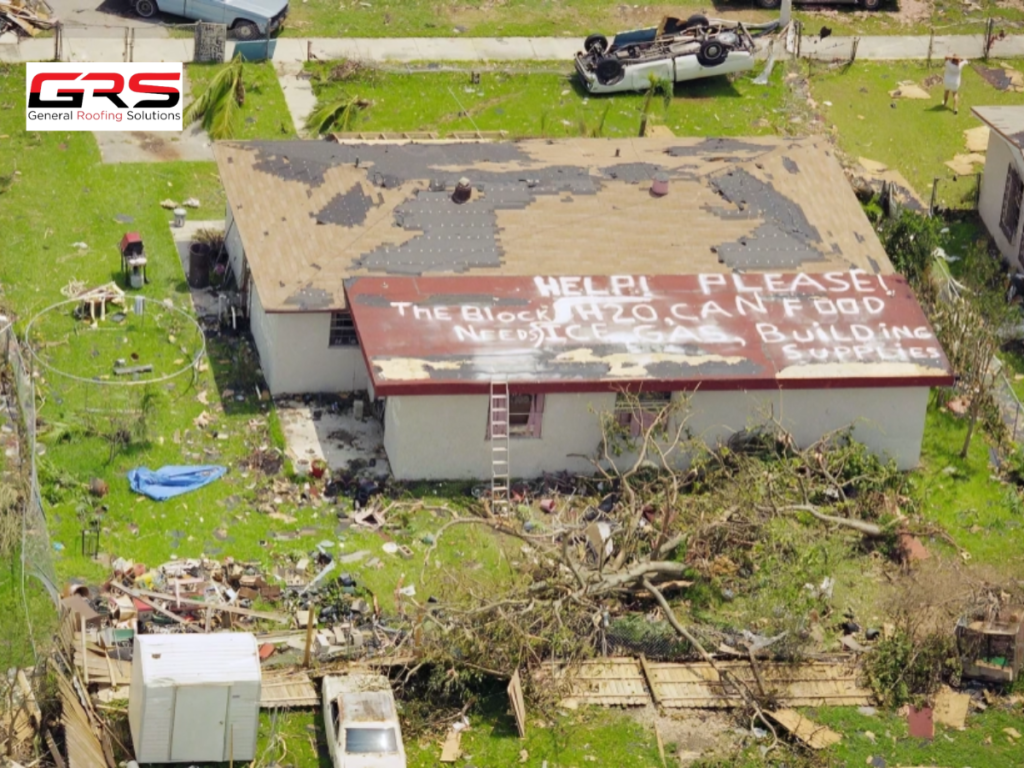South Florida recently experienced back-to-back hurricanes, Helene and Milton, leaving a trail of destruction and reminding residents of the vulnerability of homes to extreme weather. These storms underscored the importance of resilient roofing systems in protecting homes from catastrophic damage. Roofs, being the first line of defense, faced immense strain as high winds, flying debris, and torrential rains pummeled the region. In this article, we will explore the significant impact hurricanes had on roofing in South Florida, the types of damages incurred, and the essential steps homeowners must take to safeguard their properties against future storms.

The Wrath of Hurricanes Helene and Milton
Hurricanes Helene and Milton made landfall just weeks apart in late 2024, with both causing unprecedented damage to homes and infrastructure. Helene, which struck in September, was one of the strongest storms in recent history, with damage estimates ranging from $225-250 billion. Milton followed closely in October as a Category 3 storm, adding another $160-180 billion to Florida’s total damage bill. These hurricanes had lasting effects on the region, including destroyed homes, massive flooding, and extensive power outages.
Milton, in particular, was marked by its torrential downpours and wind speeds exceeding 120 mph, making it a nightmare for the region’s buildings. With rain gauges recording over 18 inches of rain in some areas and storm surges reaching up to 6 feet along the coast, homes with weaker roofing systems quickly succumbed to the elements. Additionally, more than 45 tornadoes spawned from the storm, tearing apart roofs and causing further structural damage.
How Hurricanes Affect Roofing in South Florida
When hurricanes like Milton and Helene hit, the roof of a home becomes one of the most vulnerable parts. During these storms, roofs must withstand extreme pressure, as high winds often lift shingles, tiles, or metal panels off homes. The heavy rainfall can also infiltrate any weak points in the roofing system, leading to severe leaks and water damage inside the home.
- Wind Damage
The sheer force of hurricane winds is enough to tear off roofing materials, especially shingles, tiles, and metal sheets. South Florida’s architecture often relies on various types of roofs, including asphalt shingles, clay or concrete tiles, and metal roofing. While these materials are designed to withstand typical tropical weather, hurricane-force winds can easily rip them apart. Roofs with poorly maintained or improperly installed shingles often experience the most damage, as loose or damaged materials can fly off, leaving the structure exposed to further harm. Roof flashing, which seals the edges of the roof and protects it from water intrusion, is also highly susceptible to being torn away.
- Flying Debris
During hurricanes, roofs face a secondary threat from flying debris such as tree branches, outdoor furniture, and other objects caught in the storm. These projectiles can puncture or dent roofing materials, creating openings for water to seep in. Debris impacts can also cause more structural damage by loosening tiles or shingles, and in severe cases, leading to partial or total roof collapses.
- Water Intrusion and Flooding
One of the most damaging effects of hurricanes is water intrusion. Heavy rains combined with lifted or displaced roofing materials often allow water to pour into homes, leading to mold growth, rot, and structural damage. The torrential downpour from Milton, for instance, led to flooding across large portions of Florida, where some areas recorded nearly 19 inches of rain in a single day. With roofs unable to withstand such a deluge, homes quickly filled with water, further increasing the cost of repairs.
- Tornadoes
Tornadoes, which frequently accompany hurricanes, add another dimension of danger. These swirling windstorms can tear roofs completely off homes or buildings in seconds. During Milton, 45 confirmed tornadoes caused severe damage to homes, with some losing their roofs entirely. The swift and violent nature of tornadoes leaves very little time for residents to take shelter, often leading to catastrophic damage for unprepared homes.
Common Types of Roof Damage After Hurricanes
- Shingle and Tile Loss
Shingles and tiles are the most common materials used in South Florida’s residential roofs. However, these materials are particularly vulnerable to hurricane winds, which can lift or tear them away, exposing the underlayment and roof decking to the elements. Missing shingles or tiles not only compromise the home’s ability to keep water out but also make it more likely for the roof to suffer further damage from future storms.
- Roof Leaks
Roof leaks are a common aftermath of hurricanes, especially when rain penetrates the roofing system. Even small cracks or gaps can lead to significant water damage if not addressed quickly. Hurricane Milton, with its intense rainfall, caused widespread roof leaks, leading to internal water damage, mold growth, and ruined ceilings and walls.
- Structural Damage
In some cases, the force of the wind and the impact of flying debris can weaken or destroy the structural integrity of the roof itself. Hurricane-strength winds often put immense pressure on roof trusses and rafters, sometimes causing them to buckle or collapse. Tornadoes, like those spawned by Hurricane Milton, can rip roofs completely off their frames, leaving homes exposed to further damage.
How to Prepare Your Roof for Future Hurricanes
The recent hurricanes have highlighted the importance of proactive measures when it comes to roof maintenance and repairs. Homeowners must ensure that their roofs are not only up to code but also fortified to withstand future storms. Here are some steps that can make a significant difference in hurricane-proofing your roof:
- Regular Roof Inspections
Regular roof inspections should be conducted before and after hurricane season. A qualified roofing professional can identify areas of weakness, such as missing or loose shingles, damaged flashing, or water intrusion points. Addressing these issues early can prevent minor problems from becoming major post-storm repairs.
- Reinforcing Roof Structures
Strengthening the roof’s structure through hurricane straps or ties can help keep it intact during strong winds. These metal connectors can hold the roof in place, even when faced with high winds and the pressure of flying debris. Adding additional fasteners or reinforcing roof trusses can provide extra stability and reduce the risk of structural failure.
- Upgrading Roofing Materials
Some materials are better suited to handle hurricane conditions than others. Metal roofing, for example, is more resistant to wind damage compared to asphalt shingles, and impact-resistant shingles can withstand flying debris. Homeowners can also consider installing waterproof underlayment, which adds an extra layer of protection against water intrusion if the top roofing materials are compromised.
- Clear Your Property of Debris
Removing potential projectiles like tree branches, lawn furniture, and other loose items from your property can minimize the risk of flying debris puncturing your roof. Trim trees regularly and secure outdoor items before a storm hits.
The Role of Insurance and Roofing Professionals
After a hurricane, roofing repairs are inevitable for many homeowners, and dealing with insurance claims can be a stressful process. Understanding your insurance coverage and working with reputable roofing professionals are essential for ensuring that the repairs are done correctly and covered by your policy. Many roofing companies offer emergency repair services after storms, which can temporarily mitigate damage while waiting for a more permanent fix.
In Conclusion
The devastation caused by hurricanes Helene and Milton has left a lasting impact on South Florida’s homes, particularly the roofs that shield families from the elements. These storms have shown just how critical it is for homeowners to prioritize roof maintenance and hurricane preparedness. By strengthening roofs, using durable materials, and taking proactive measures, residents can better protect their homes from the next inevitable storm. In a region as hurricane-prone as South Florida, being prepared means not just surviving the storm but minimizing its lasting effects on your home and your peace of mind.
Need Roofing Services for your home,Contact us for more details


